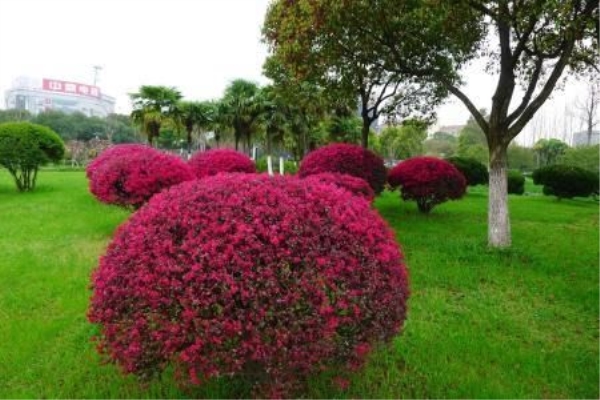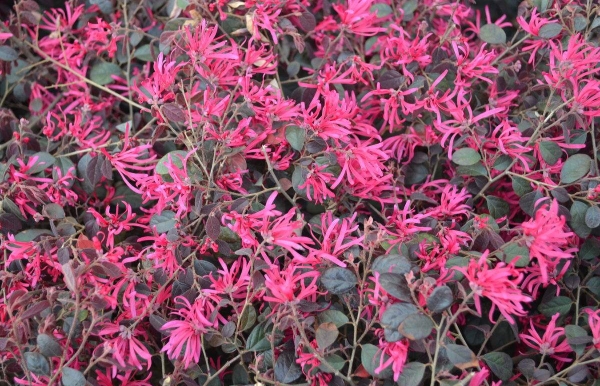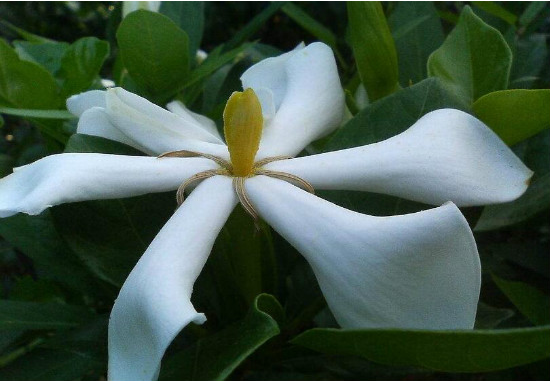Matters needing attention in breeding Carthamus tinctorius
When cultivating safflower trees, it is necessary to turn the basin regularly, and the soil can be changed when turning the basin to provide sufficient nutrients for the plant. pay attention to watering thoroughly when putting on the basin. And Carthamus tinctorius has strong germination and rapid growth, so it needs to be pruned to control the plant type and maintain its high appreciation value.

Matters needing attention in the Culture of Carthamus tinctorius
The pot of Carthamus tinctorius needs to turn the pot regularly, and the time of turning the pot is determined according to the size of the plant. The smaller the plant type is, the shorter the interval time is, the soil can be changed when turning the pot, and the pot should be watered thoroughly.
Pruning
Carthamus tinctorius has strong germination and rapid growth, so it needs to be pruned to control the plant type, to keep a beautiful shape and to shape its favorite potted image by pruning and pruning. At the same time, it can also improve the ventilation and light transmission conditions of safflower, and grow well.
Diseases and insect pests
The diseases of Carthamus tinctorius include root rot, powdery mildew, coal fouling and yellowing disease. insect pests are mainly aphids, red spiders and so on.
Culture methods and matters needing attention of Carthamus tinctorius
Culture method soil of Carthamus tinctorius
Carthamus tinctorius has strong adaptability and can tolerate barren, but it grows better in moist and fertile slightly acidic soil. In the soil, some mature organic fertilizer should be used as base fertilizer.
Light and temperature
Carthamus tinctorius likes light and warm climate. It can withstand cold and shade slightly. Carthamus tinctorius needs sufficient light, healthy growth and bright flowers and leaves, but it needs shade in summer to avoid direct sunlight, build a shed or keep the potted plants out of direct sunlight for maintenance, and be careful not to turn green. It is suitable to keep the growth temperature at about 20 ℃, but the temperature is low in winter, so it is better to put it indoors for the winter, and the temperature should be kept above 5 ℃, so we should pay attention to ventilation.
Water and fertilizer management
Carthamus tinctorius likes a humid environment and should be watered appropriately during its growth. The pot soil should not be too dry or too wet. General watering, summer needs more watering, but also pay attention to spraying, winter because safflower will dormancy so to reduce watering, but also can not be too dry. If you apply fertilizer, you can apply it every half a month during the growth period, and you can apply less or no fertilizer during the dormant period. Pay attention to safflower wood like acid, you can spray some ferrous sulfate solution, and apply some potash fertilizer before flowering.
Matters needing attention in the Culture of Carthamus tinctorius
The pot of Carthamus tinctorius needs to turn the pot regularly, and the time of turning the pot is determined according to the size of the plant. The smaller the plant type is, the shorter the interval time is, the soil can be changed when turning the pot, and the pot should be watered thoroughly.
Pruning
Carthamus tinctorius has strong germination and rapid growth, so it needs to be pruned to control the plant type, to keep a beautiful shape and to shape its favorite potted image by pruning and pruning. At the same time, it can also improve the ventilation and light transmission conditions of safflower, and grow well.
Diseases and insect pests
The diseases of Carthamus tinctorius include root rot, powdery mildew, coal fouling and yellowing disease. insect pests are mainly aphids, red spiders and so on.
- Prev

Propagation methods of Carthamus tinctorius
Carthamus tinctorius mostly adopts the method of cutting propagation, and chooses the fields with good drainage, sufficient sunshine and fertile soil, and selects the branches with sturdy and full and prominent bud eyes from the strong mother plant to carry on cutting. Fully water the soil after cutting, then seal it with a thin film.
- Next

Matters needing attention in the cultivation of Gardenia jasminoides
1. Pay attention to avoid yellowing of leaves. Light is a very important factor in the growth of Fructus Gardeniae. The light is suitable in the spring and autumn season, and you can receive direct sunlight outside. When it is hot in summer, when the sun is strong, you can make a shade to block out the sun. And in winter,
Related
- Fuxing push coffee new agricultural production and marketing class: lack of small-scale processing plants
- Jujube rice field leisure farm deep ploughing Yilan for five years to create a space for organic food and play
- Nongyu Farm-A trial of organic papaya for brave women with advanced technology
- Four points for attention in the prevention and control of diseases and insect pests of edible fungi
- How to add nutrient solution to Edible Fungi
- Is there any good way to control edible fungus mites?
- Open Inoculation Technology of Edible Fungi
- Is there any clever way to use fertilizer for edible fungus in winter?
- What agents are used to kill the pathogens of edible fungi in the mushroom shed?
- Rapid drying of Edible Fungi

